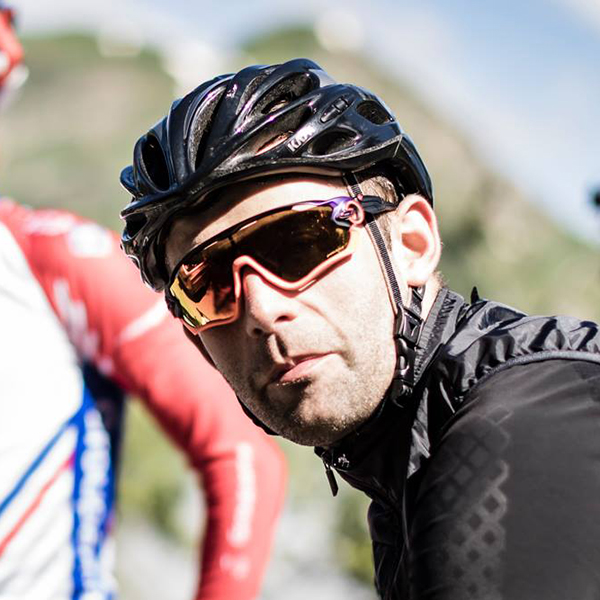The Merida Scultura is the Taiwanese giant’s all-round race bike, blending an aggressive race-bred geometry with a frame shooting to strike a balance between low weight and aerodynamics.
The platform also has a good reputation at BikeRadar. The top-spec Scultura Team won our 2022 Performance Bike of the Year category, while the next-level-down Scultura 9000 impressed with its near-unimpeachable build for its sub-£6,000 price.
The Scultura Limited effectively scales back the spec recipe and halves that price, making it a far more attractive proposition for those not willing, or able, to spend big money.
Overall, it’s far from flawless. Nevertheless, it will get you on the carbon race bike ladder while offering plenty of upgrade potential.
Merida Scultura Limited frame
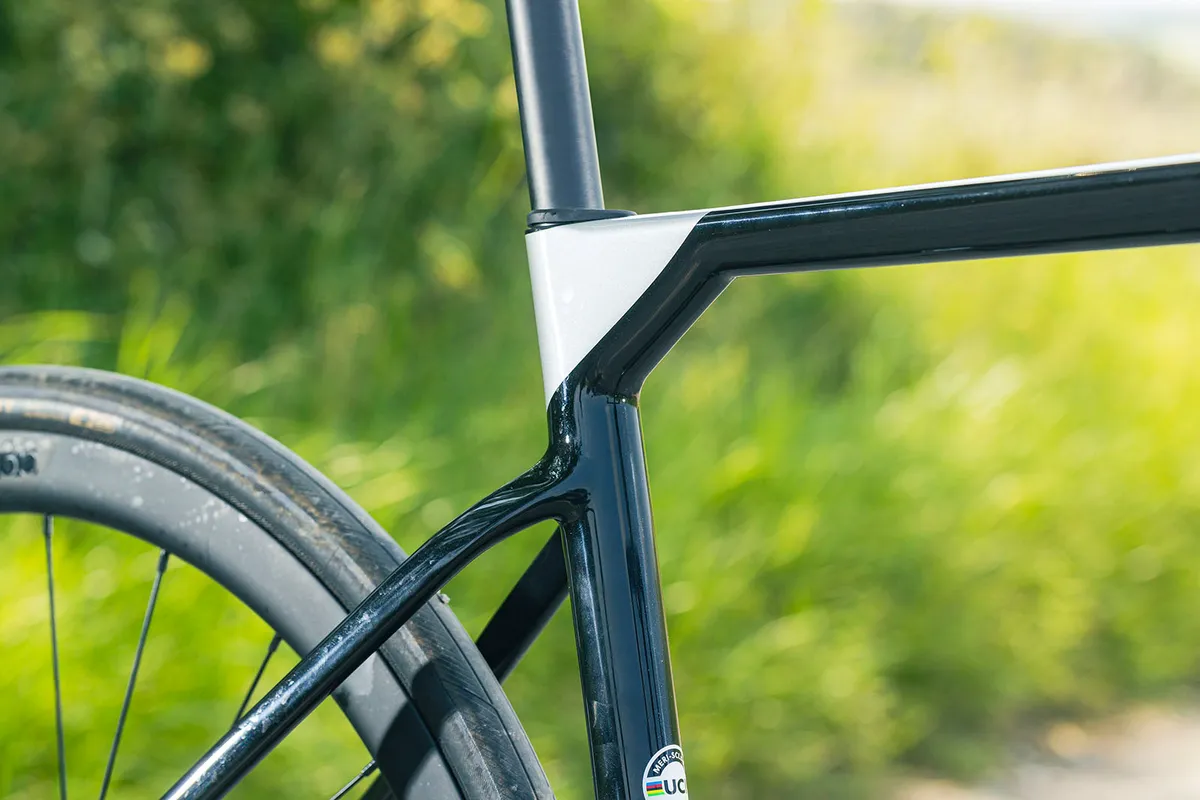
The Merida Scultura Limited frame is made from Merida’s entry-level carbon mix – known as ‘CF3’, compared to the Team and 9000 models’ premium ‘CF5’ spec.
Merida claims its CF3 carbon offers similar levels of desirable performance as CF5 – stiffness and compliance – while adding a small amount of weight.
A CF3 frame is claimed to weigh 997g in a size medium, compared to the 861g claim attached to a CF5 frame.
In reality, a 136g weight difference is unlikely to make much (if any) difference to the vast majority of riders, unless you’re especially keen to make the lightest Scultura possible.
Merida says it used ‘nano matrix particles’ in the resin, which it claims improves strength by up to 40 per cent – theoretically useful, should you be involved in a crash.
The frame and fork officially have clearance for up to 700 x 30c tyres. You might be able to squeeze 32c rubber in there, but nevertheless it sits behind newer similarly pitched bikes such as the Canyon Ultimate and Cannondale Supersix Evo, which have sanctioned space for 32c and 34c tyres, respectively.
The frame features NACA Fastback aero tubing (where the rear side of each tube is truncated versus a traditional teardrop shape to save weight without ruining the airflow), and now-standard dropped seatstays.
Routing is internal throughout, and can accommodate both mechanical and electronic groupsets.
The headset uses FSA’s SMR routing system, with a 1-1/2in lower bearing paired with a narrower 1-1/4in top bearing. The steerer is rounded, which helps protect against any pinching of routed lines.
Refreshingly, the Scultura uses a standard 27.2mm round seatpost, which is secured using a wedge clamp. The adjustment bolt lives in the protuberance on the inside angle of the junction of seat tube and top tube.
All together, this gives you fairly free choice should you choose to upgrade the cockpit or seatpost to your needs.
The Scultura uses a BB86.5 press-fit bottom bracket.
Merida Scultura Limited geometry
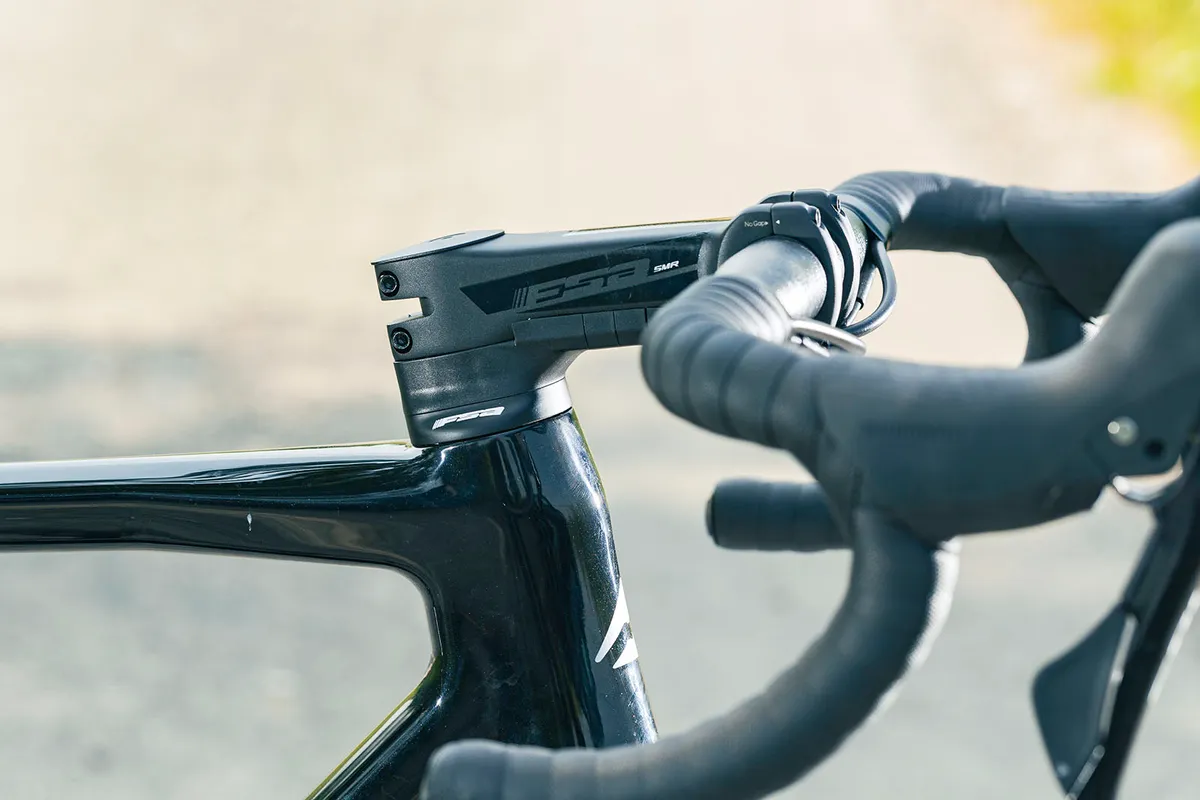
The Merida Scultura’s geometry is slap-bang where you’d expect a race bike’s geometry to be. It mirrors that of the CF5-spec Team and 9000 models.
It’s also worth noting that it’s distinct from the Scultura Endurance geometry, which is more relaxed.
The geometry mirrors that of the Merida Reacto (a pure aero bike) in a similar manner to how Trek repeats its H1.5 geometry across its Émonda and Madone bikes.
In my size-medium bike (which Merida says is a close match for a nominally 56cm bike, meaning it comes up large versus typical bike sizing), you get matching racy 73.5-degree head tube and seat tube angles.
The medium frame has a 395mm reach, which compares to a medium Canyon Ultimate at 393mm.
A Cannondale Supersix Evo has a more compact take on reach, though – you get 395mm only on a size-58cm bike, while a 54cm bike (usually considered a ‘medium’) provides 384mm.
If nothing else, it demonstrates how valuable knowing your optimum bike fit details can be when selecting the right bike for you.
| | XXS | XS | S | M | L | XL |
|---|---|---|---|---|---|---|
| Seat angle (degrees) | 74.5 | 74 | 74 | 73.5 | 73 | 73 |
| Head angle (degrees) | 70.5 | 72 | 72.5 | 73.5 | 73.5 | 74 |
| Chainstay (mm) | 408 | 408 | 408 | 408 | 408 | 408 |
| Seat tube (mm) | 435 | 458 | 481 | 501 | 521 | 550 |
| Top tube (mm) | 520 | 535 | 545 | 560 | 575 | 590 |
| Head tube (mm) | 105 | 112 | 128 | 140 | 155 | 176 |
| Bottom bracket drop (mm) | 70 | 70 | 66 | 66 | 66 | 66 |
| Wheelbase (mm) | 985 | 982 | 989 | 990 | 1,000 | 1,010 |
| Standover (mm) | 721 | 745 | 765 | 782 | 800 | 823 |
| Stack (mm) | 517 | 529 | 542 | 557 | 571 | 593 |
| Reach (mm) | 377 | 383 | 390 | 395 | 400 | 409 |
Merida Scultura Limited build
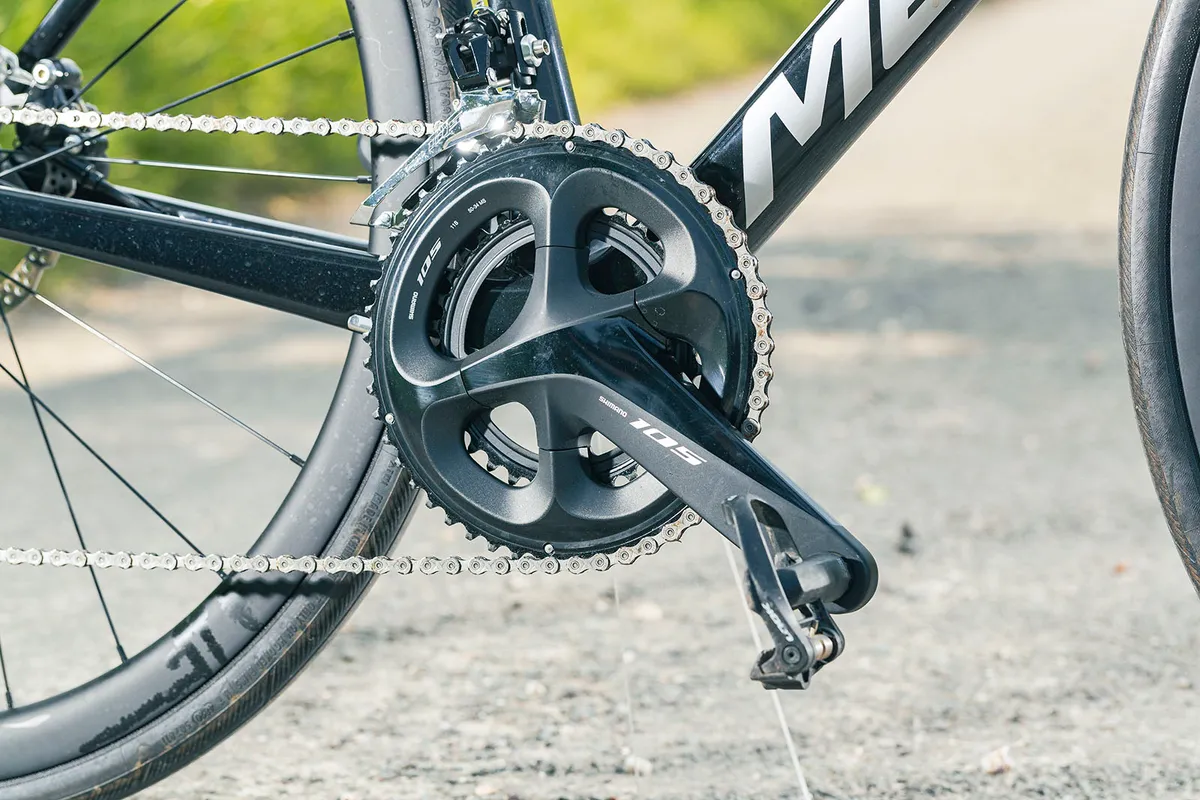
The Merida Scultura Limited comes with a Shimano 105 R7000 groupset.
Although Shimano’s mechanical 11-speed groupset options are arguably getting long in the tooth compared to the newer 12-speed electronic variants, 105 R7000 still offers all the slick functionality and performance many will ever need.
12-speed offers an extra sprocket and a slightly more gradual progression across the block, but in my experience the difference between the two is only really noticeable if you’re switching back and forth regularly between 11- and 12-speed drivetrains.
Merida also specs the 11-30 tooth cassette variant, so the ratios are relatively close together, pairing this to a compact 50/34-tooth crankset.
The slight downside to the smaller of the two crankset options (105 R7000 can also be had in a 52/36T semi-compact variant) is you can find yourself spinning out on long, fast descents.
That said, the 34t inner chainring balances the lack of a ‘get out of jail’ 32 or 34t sprocket.
Merida, in order to help it hit the £3,000 price, has opted for Shimano’s non-series RT54 rotors.
They’re still perfectly functional and usable, but don’t look quite as premium as the standard 105 rotors.
The seatpost is a Merida Expert CC carbon model, incorporating a 15mm setback. The saddle is a Merida Expert SL model with alloy rails.
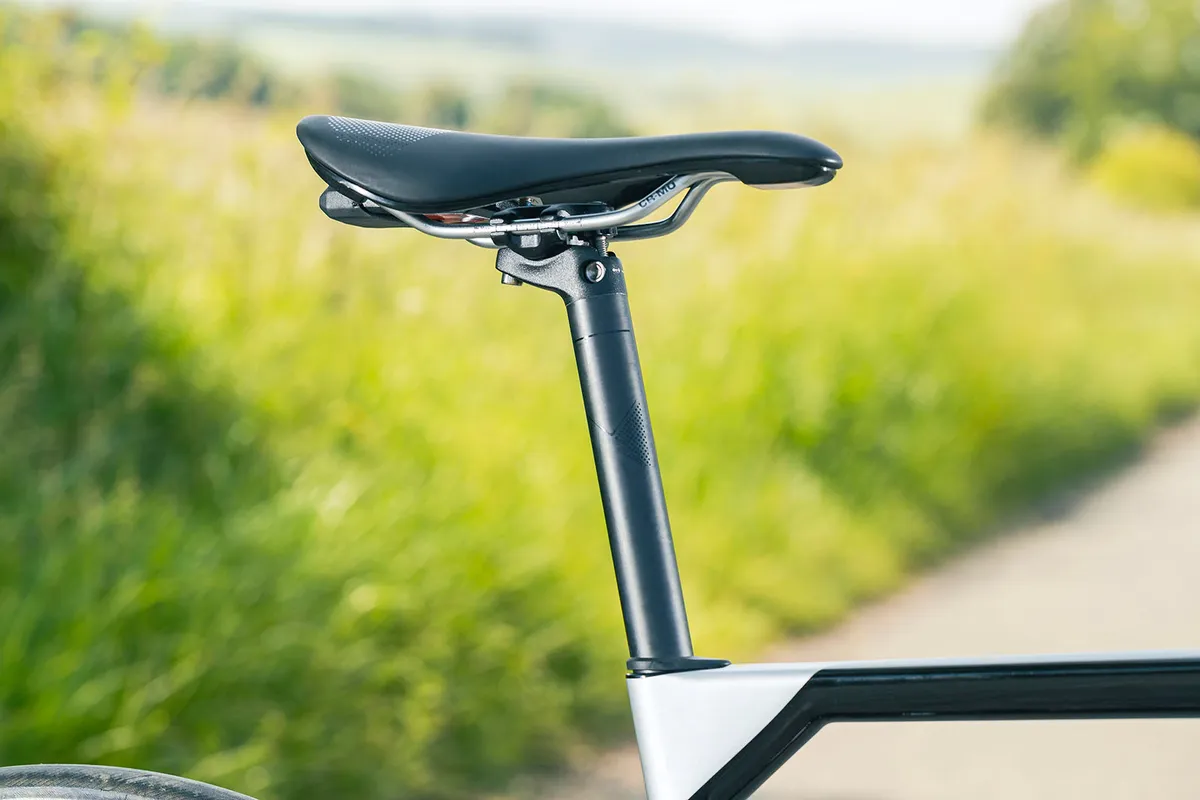
If you get on with the shape, the added bonus is the saddle comes with an integrated multi-tool set in between the rails.
I found this made fitting my own Topeak and Restrap saddle bags difficult, thanks to the compromised space left to thread the straps between. However, the essential keys needed to do some quick work on the Scultura are all present and correct.
Up front, Merida specs a 420mm-wide Expert SL alloy handlebar in a size medium (440mm in a size large and above), married to a 110mm FSA alloy stem.
Your optimum fit will dictate whether these dimensions are right for you.
Merida says while it doesn’t offer component swaps at a brand level – this means there are no guarantees – a bike shop stocking Merida bikes may be able to help swap components, subject to availability.
Out of the box, I found the 420mm-wide handlebar too wide for purpose, despite my broad frame.
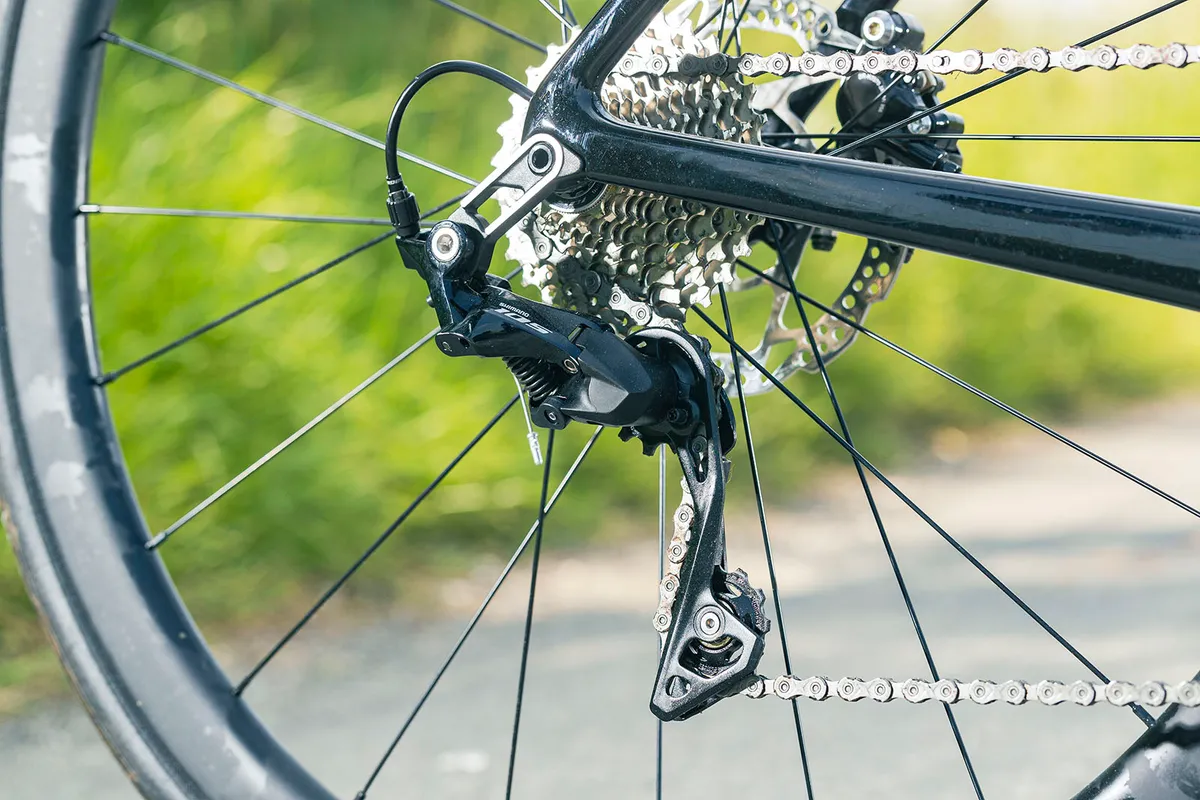
On such a racy bike, with aerodynamic efficiency being important, I’d hope for a narrower size to help keep me tucked in, rather than splayed out like a windbreak.
You could argue that a wider bar steadies the handling somewhat, but to maximise the sharp overall behaviour of the Scultura, a 400mm bar (some might prefer even narrower) would be more appropriate.
That said, a 420mm bar remains the industry standard for medium-to-large sized road bikes, so Merida isn’t alone in this. The brand also says it has selected these widths based on what it thinks will “best suit the vast majority of riders riding that [frame] size”.
The markedly narrow diameter at the key touchpoints is also a low point. It offers little to grasp securely (perhaps unless you have smaller hands), while the low real estate increased the pressure applied to my hands too, especially when riding on the tops.
The front end therefore feels somewhat rigid – a world away from the integrated carbon Team SL bar-stem offered on the 9000 model, for example.
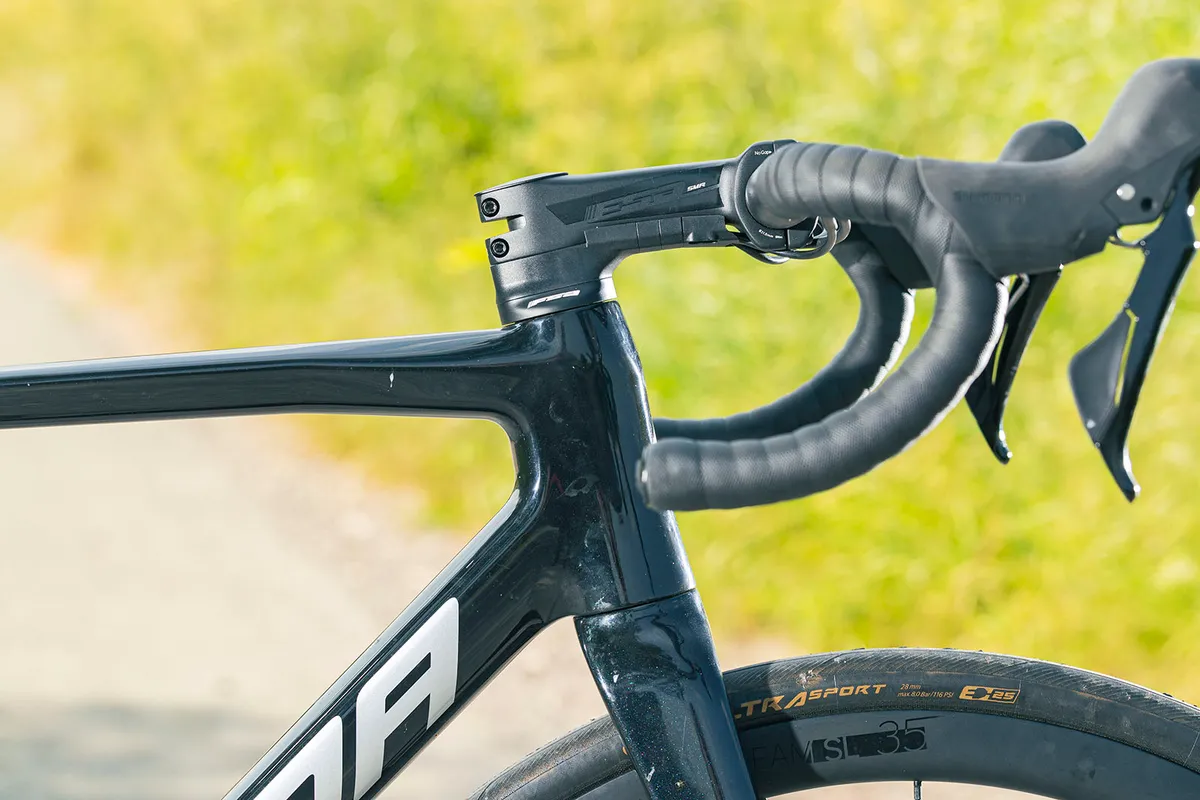
The upside of this non-integrated setup, though, is it’s fairly cheap and easy to swap in your preferred handlebar, if (like me) you don’t like the stock option.
The Scultura Limited’s ace in the hole is the inclusion of a mid-depth carbon wheelset, its own Team SL35 model. This offers a competent but unspectacular entry point to the world of carbon wheels.
The spokes are standard stainless steel (not bladed), the rims are only 19mm wide internally (21mm is now widely considered on-trend) and the hubs, while acceptable, don’t bite with much ferocity.
That said, the 35mm depth broadly offers more aero efficiency than a shallower alloy wheelset, delivers decent stiffness when hammering up a climb, and is tubeless-compatible.
Swapping the clincher-only 700 x 28c Continental Ultra Sport tyres that come fitted to the wheelset for Continental’s GP5000 S TR tubeless tyres (or just GP5000 clinchers, should you want to stick with tubes) would be a worthwhile upgrade.
However, as a starting point at least, the Ultra Sports are a reasonable choice at this price and offer the essential grip, if not suppleness, most will desire.
Merida Scultura Limited ride impressions
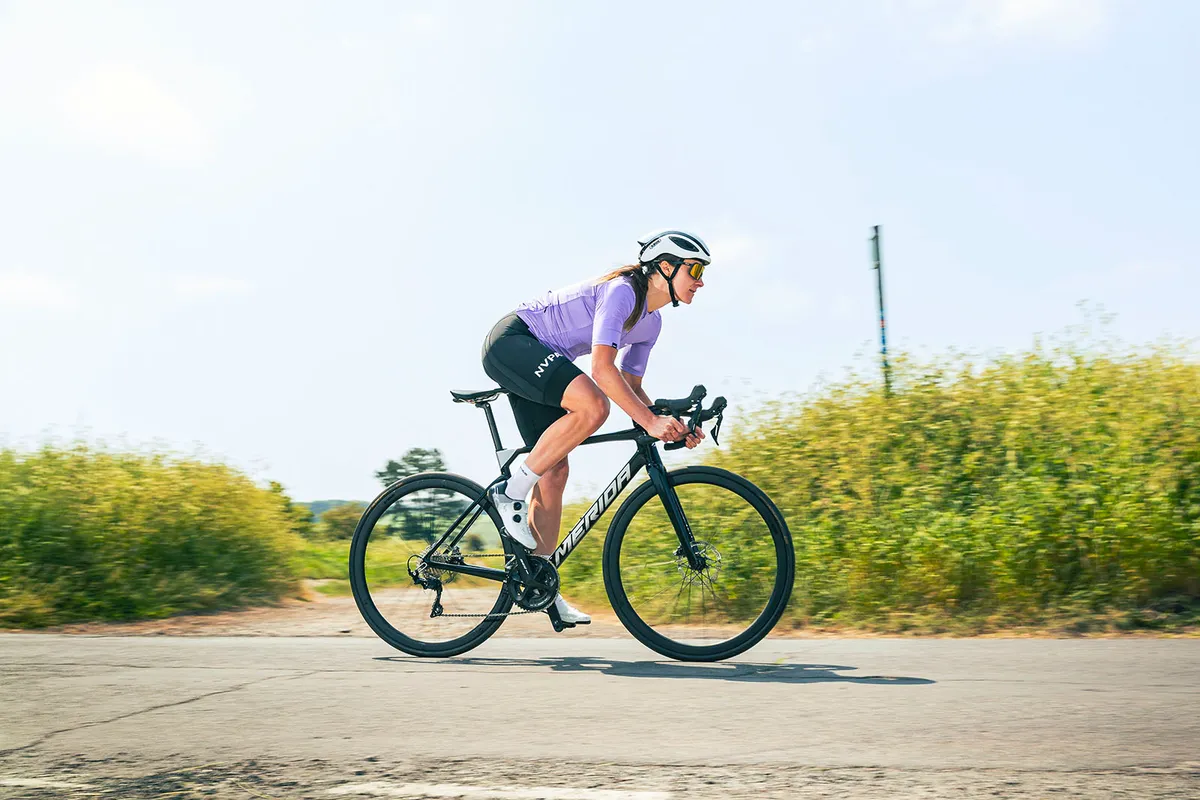
At its core, the Merida Scultura provides practically all the fun and nimble ride behaviour its high-spec siblings can.
The Scultura Limited offers keen handling and sharp steering, buckets of stiffness and a small measure of compliance to keep things in check.
Aside from the small weight sacrifice, I’m confident the CF3-spec frameset gives little away to its CF5 brethren – this bike has almost all the potential of those highly-specced machines.
From this point of view, the Scultura Limited offers an enticing entry point to true race bike performance.
On paper, only a Canyon Ultimate CF SL 7 (with 105 R7000, alloy wheels and premium tyres) or Ultimate CF SL 8 (same wheels and tyres, but with the increasingly-rare Shimano Ultegra R8000 groupset and single-sided power meter) at £2,599 and £3,099 respectively have it beaten.
However, as I’ve already alluded to, some of the spec choices have a noticeable effect on the overall ride quality.
I’m inclined to think of the Scultura Limited as a highly capable bike waiting for some smart upgrades to realise its potential – a common criticism of bikes pitched at the mid-range – rather than punching far above its weight for the £3,000 asking price.
The Ultra Sport tyres don’t inspire great confidence when cornering hard or descending. Grip levels are sound, but the tyre doesn't transmit much in the way of road feel – the key component of building confidence in your bike’s handling.
The non-series brake rotors are also a thorn in the side – I found it difficult to push as deep into corners on the brakes as I have done in the past on the 105-spec rotors.
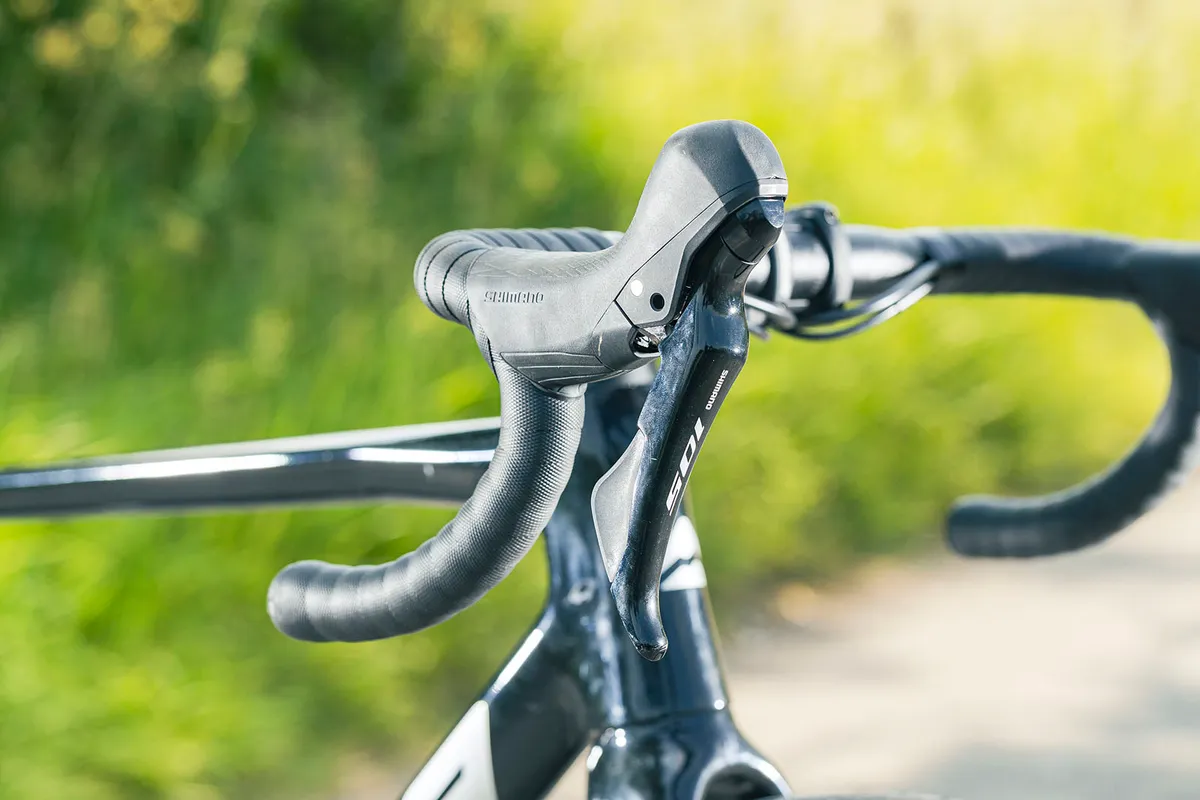
By the same token, the narrow 19mm rims don’t maximise the 28c tyre’s nominal width (I measured them at a shade under 28mm at 80psi), so arguably don’t offer optimised compliance either.
These sensations are compounded to a degree by the thin handlebar, which I found myself clinging onto on a number of occasions, as opposed to resting comfortably.
Comfort and confidence can, of course, be derived from a number of sources, but a broader diameter wouldn’t go amiss here.
That said, the seatpost offers decent mitigation against light road buzz.
With the benefit of testing dozens of carbon wheelsets at varying price points over the years, the Team SL35 wheelset (while narrow), is a competent entry-level all-rounder and pairs well.
It cuts through the air on the flat, yet its 35mm depth meant I wasn’t pushed about in crosswinds.
Acceleration and overall ride sensations feel slightly dull overall – the Basso Astra’s Microtech alloy wheelset (tested alongside the Scultura Limited) rode like a better climbing wheel – but this is more than balanced by the aero trade-off.
Perhaps a higher-spec alloy wheelset paired with premium tyres, such as the Ultimate CF SLs mentioned before, would have been a better compromise.
Overall, these key spec choices left me grasping for somewhat more performance than the overall build can offer.
But, importantly, the Scultura Limited certainly offers the gateway should you wish to upgrade smartly over time.
Merida Scultura Limited bottom line
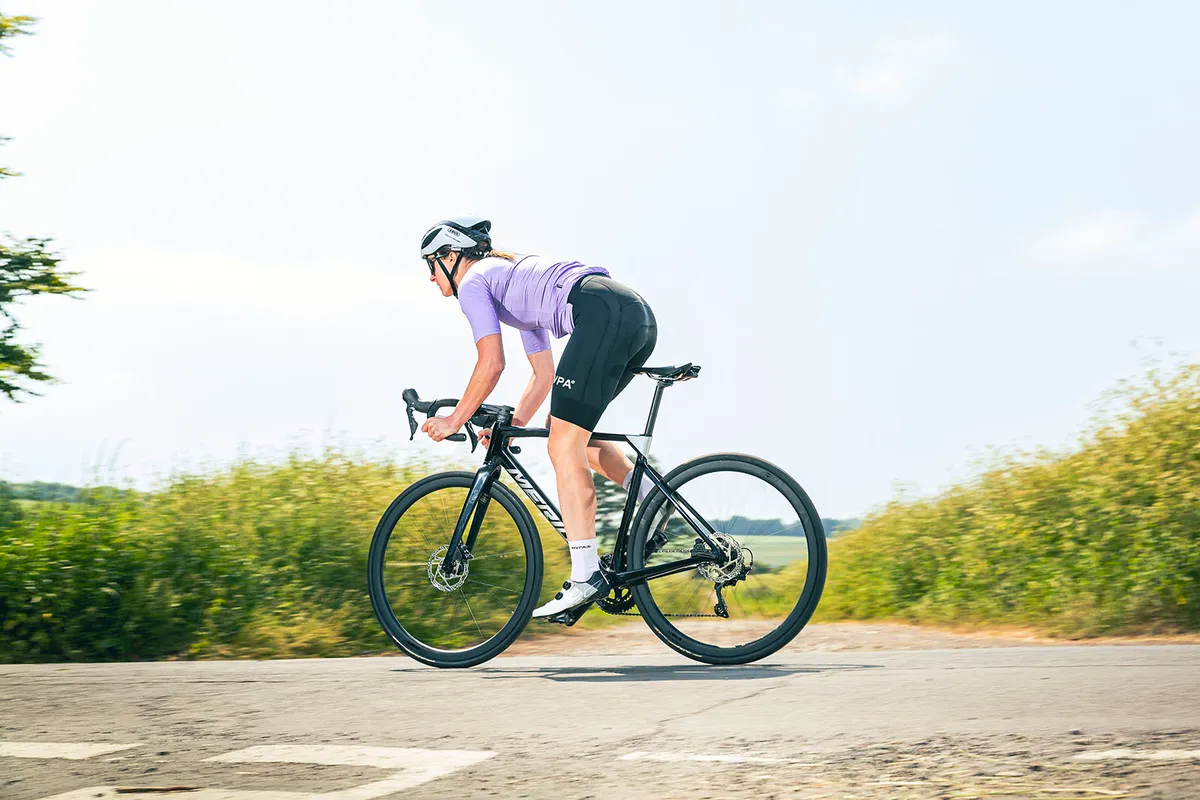
Although there are some ripe-for-upgrade spec choices, the Scultura Limited bears the heart of a very good – and proven – race bike.
This particular model is arguably best viewed as an entry point to a higher plane of race bike existence. It’s priced competitively to get you started, offers decent performance from the get-go, then a few component swaps will raise its game when you’re ready.
Naturally, that means the low initial asking price comes with an asterisk of extra future cost, but that shouldn’t detract much from a bike that still offers plenty of bang for buck out of the box.
Product
| Brand | Merida |
| Price | £3000.00 |
| Weight | 8.97kg |
Features
| Fork | Merida Scultura CF3 carbon |
| Stem | FSA ACR SMR |
| Chain | Shimano 105 11-speed |
| Frame | Merida Scultura CF3 carbon |
| Tyres | Continental Ultra Sport, 700x28c |
| Brakes | Shimano 105 R7020 hydraulic disc |
| Cranks | Shimano 105 R7000, 50/34 |
| Saddle | Merida Expert SL |
| Wheels | Merida Team SL35 wheelset |
| Shifter | Shimano 105 R7000 |
| Cassette | Shimano 105 R7000, 11-speed, 11-30t |
| Seatpost | Merida Expert CC (15mm setback) |
| Handlebar | Merida Expert SL |
| Bottom bracket | BB86 press-fit |
| Available sizes | XXS, XS, S, M, L, XL |
| Rear derailleur | Shimano 105 R7000 |
| Front derailleur | Shimano 105 R7000 |
